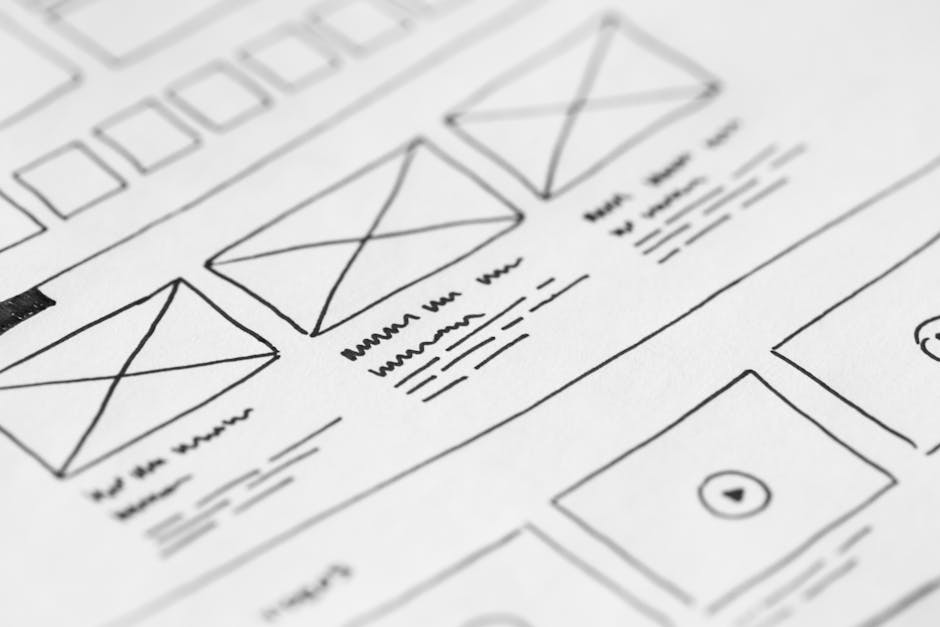Embracing Modern Website Design
Table of Content.
- What is Modern Website Design?
- Key Elements of a Modern Website
- Importance of Responsive Design
- User Experience and Navigation
- Incorporating Custom Features
- SEO Best Practices for Modern Sites
- Future Trends in Website Design
What is Modern Website Design?
Modern website design is all about creating websites that are visually appealing and user-friendly. It often uses clean lines, simple colors, and lots of white space. This approach helps users focus on the content without distractions. Designers aim for a balance between aesthetics and functionality.
A key part of modern design is responsiveness. This means a website looks good and works well on all devices, like phones, tablets, and computers. Designers use techniques like flexible grids and scalable images to ensure this adaptability.
Another aspect is minimalism, which favors simplicity over clutter. This approach makes navigation easier for users. For example, a modern design might use a single column layout with clear headings to guide users through the content.
Animations and interactive elements are often used to engage visitors. These features make websites feel more dynamic and alive. For instance, a button might change color when clicked, providing visual feedback to the user.
Accessibility is also crucial. Modern designs prioritize making websites usable for everyone, including people with disabilities. Techniques like screen reader compatibility and keyboard navigation are common.
Overall, modern website design combines style with usability, ensuring an enjoyable experience for all users.
Key Elements of a Modern Website
When designing a modern website, several key elements come into play. The foundation lies in the custom-website that reflects the brand's identity. A user-friendly website-design ensures visitors can navigate easily. Responsive-website design is crucial, adapting seamlessly to different devices, whether it's a smartphone or a tablet.
Visual appeal is important. Using clean lines and ample white space gives the site a fresh and modern look. High-quality images and graphics should complement the text, not overpower it. Site-design must include fast loading times. Slow websites can frustrate users and cause them to leave.
Business-design should focus on clear calls to action. Whether it's signing up for a newsletter or making a purchase, guiding the user is key. Modern-design also involves integrating social media buttons, allowing visitors to share content effortlessly. A modern website should be secure, protecting user data and ensuring privacy, which builds trust.
Importance of Responsive Design
Responsive design is a big deal in modern websites. Imagine opening a site on your phone and everything looks tiny. That's what responsive design solves. It adjusts the website to fit any screen size, whether it's a phone, tablet, or desktop.
Why is this important? People use different devices to browse. If a site doesn't work well on a phone, users might leave. That's a lost opportunity for businesses. A well-designed site keeps visitors happy and engaged.
Think of responsive design like water. It flows and fills the container it's in, adapting to any shape. This flexibility makes sure everyone has a smooth experience, no matter how they access the site.
User Experience and Navigation
User experience, often called UX, is all about how a person feels when using a website. When we talk about modern design websites, UX is a big deal. It's like going into a shop. If the shop is easy to walk through and things are easy to find, you'll enjoy shopping there. The same goes for websites.
Good navigation is part of UX. It helps you find what you're looking for without getting lost. Think of navigation as a map. Clear menus and buttons are your guide. They tell you where to go next. If a website is cluttered with too many options, it can be confusing and frustrating.
Modern design websites often use a simple top menu or a sidebar. These menus are easy to read and understand. They may also include a search bar. This is like asking a store clerk for help. If you can't find what you're looking for, the search bar can quickly guide you to the right place.
Another key part of UX is how fast a website loads. No one likes waiting. Slow websites can make visitors leave, just like a long line at a shop. Quick loading times keep users happy and engaged.
Lastly, think about mobile devices. Many people use phones or tablets to browse. A responsive website adjusts to different screen sizes. This ensures everyone gets a good experience, no matter what device they use.
Incorporating Custom Features
In the world of modern design websites, adding custom features can make a huge difference. These features help your site stand out and offer users a unique experience. Let's break down what custom features are and how they can be used effectively.
Custom features are special elements or functions added to a website to give it unique capabilities. They could be anything from a live chat option to an interactive map. Adding these features can make your website more engaging and functional. For example, if you run a restaurant, an online booking system is a handy custom feature. It allows customers to reserve tables directly on your website.
Responsive websites benefit greatly from custom features. A responsive design ensures that your site looks good on any device, be it a phone or a desktop. Custom features, like a mobile-friendly navigation menu, enhance this experience. They ensure that users can easily find what they need, no matter how they access your site.
Now, let's talk about how to implement these custom features. First, you need to identify the needs of your business or audience. Are your users looking for a simple way to contact you? A custom contact form might be the answer. If you're in e-commerce, adding a product filter can help users find what they need faster.
Next, consider the design aspect. Custom features should blend seamlessly with the overall site design. They should not look out of place or disrupt the user experience. For instance, if your website has a minimalist design, a flashy, colorful feature might not fit well. Instead, opt for features that match the site's look and feel.
It's also important to think about the technical side. Custom features often require development work. Collaborate with a skilled web developer who understands your vision. They can help bring your ideas to life and ensure the features work smoothly.
Finally, test these features thoroughly before launching. Testing helps catch any issues that could affect user experience. You want to make sure that everything works as intended and provides value to your visitors.
Incorporating custom features requires thoughtful planning and execution. But when done right, these features can significantly enhance your website, providing a better experience for your users.
SEO Best Practices for Modern Sites
Creating a modern design website that ranks well in search engines involves understanding SEO best practices. SEO, or Search Engine Optimization, is the process of improving a site's visibility on search engines like Google. Let's break down some key strategies to enhance your site's SEO.
First, focus on keywords. Keywords are the words or phrases people type into search engines. For a modern website, you need to choose keywords that match what your audience is searching for. Tools like Google Keyword Planner can help you find these words. Once you have your keywords, use them naturally throughout your site. This includes titles, headers, and content.
Next, consider the importance of mobile optimization. A responsive website design ensures your site looks good on any device. With more people using smartphones to browse the web, a mobile-friendly site is crucial. Google's algorithm favors sites that work well on all devices, so make sure your design adapts to different screen sizes.
Page speed is another factor that affects SEO. If your site takes too long to load, visitors may leave before it finishes. Use tools like Google's PageSpeed Insights to check your site's speed and identify areas for improvement. Compressing images and using browser caching can make a big difference in how quickly your site loads.
Quality content is king in the world of SEO. Your content should be informative and engaging. It should answer the questions your audience is asking. Regularly updating your content also signals to search engines that your site is active and relevant. This can lead to better rankings.
Don't forget about links. Internal links connect different pages within your site, making it easier for visitors to navigate. External links, on the other hand, connect your site to others. Both types of links are important for SEO. Internal links help distribute page authority across your site, while external links show search engines that your content is credible.
Lastly, ensure your site is secure. HTTPS is a protocol that ensures data sent between the server and browser is encrypted. A secure site is trusted by users and search engines alike. Google even gives a slight ranking boost to sites using HTTPS.
By focusing on these SEO best practices, your modern design website can achieve better visibility and attract more visitors.
Future Trends in Website Design
The world of website design is always on the move. As technology changes rapidly, so do the trends in creating websites. One of the big trends is the use of Artificial Intelligence (AI). AI can help in making websites smarter and more interactive. For example, chatbots can answer questions from visitors anytime, making customer service available 24/7. AI can also personalize the user experience by showing content based on the visitor's interests.
Another trend is the rise of voice search. More people are talking to their devices instead of typing. This means websites need to be optimized for voice search. Simple language and clear information are important for voice search, as people tend to use natural phrases when speaking.
Mobile-first design is a key focus too. Since many people use phones to browse, websites must look good and work well on small screens. This means easy navigation and quick loading times are essential. A responsive website that adapts to different devices is crucial.
The use of bold and vibrant colors is becoming more popular in modern design. These colors can make a website stand out and attract attention. Yet, it's vital to balance colors so they do not overwhelm the user.
Minimalism is another trend, where less is more. Clean designs with lots of white space make a website look modern and easy to navigate. This approach helps users focus on the content without distractions.
Animations and micro-interactions are also gaining ground. Small animations can provide feedback to users, making the site more engaging. For example, a button changing color when clicked can enhance user interaction.
Sustainability is a rising concern. Many businesses want their sites to be energy-efficient. This means optimizing images and code to reduce the website's carbon footprint. Sustainable design not only helps the environment but can also attract eco-conscious users.
Lastly, accessibility is becoming a priority. Websites need to be usable by everyone, including people with disabilities. This involves using readable fonts, proper contrast, and including text descriptions for images. Making a website accessible can widen its audience and improve user satisfaction.
As we look to the future, these trends show where website design is heading. Keeping up with these changes can help create a modern design website that meets users' needs and expectations.
FAQ
What is modern website design?
Modern website design refers to the latest trends and practices in creating websites that are visually appealing, user-friendly, and functional. It incorporates contemporary aesthetics, clean layouts, and cutting-edge technology to provide an engaging user experience. In today's digital landscape, it matters because it helps businesses establish a strong online presence and stay competitive.
What are the key elements of a modern website?
The key elements of a modern website include a clean and intuitive layout, a consistent color scheme that aligns with the brand, and typography that enhances readability. Additionally, incorporating high-quality images, multimedia content, and interactive features also play a significant role in defining a modern website.
Why is responsive design important?
Responsive design is crucial because it ensures that a website adapts seamlessly to various devices and screen sizes, providing a consistent user experience. As more users access the internet via mobile devices, having a responsive design is essential for maintaining engagement and reducing bounce rates.
How does navigation affect user experience?
Intuitive navigation enhances user experience by making it easy for visitors to find the information they need quickly. A well-structured menu, logical page hierarchy, and clear call-to-action buttons help keep visitors engaged, reduce frustration, and encourage them to explore more of the website's content.
What are the benefits of incorporating custom features into a website?
Incorporating custom features into a website allows businesses to stand out from the competition by offering unique functionalities or tailored user experiences. Custom features can improve user engagement, streamline processes, and create a distinctive brand identity that resonates with the audience.
How can I optimize my modern website for search engines?
To optimize a modern website for search engines, focus on implementing SEO best practices such as using relevant keywords, creating high-quality content, optimizing page load speed, and ensuring mobile-friendliness. Additionally, using descriptive alt text for images, creating a sitemap, and securing the site with HTTPS can also improve search engine visibility.
What are some future trends in website design?
Emerging trends in website design include the use of AI-driven personalization, voice user interfaces, and immersive experiences with augmented and virtual reality. Businesses can prepare by staying informed about these technologies, understanding their audience's preferences, and being ready to adapt their design strategies to incorporate these innovations effectively.



